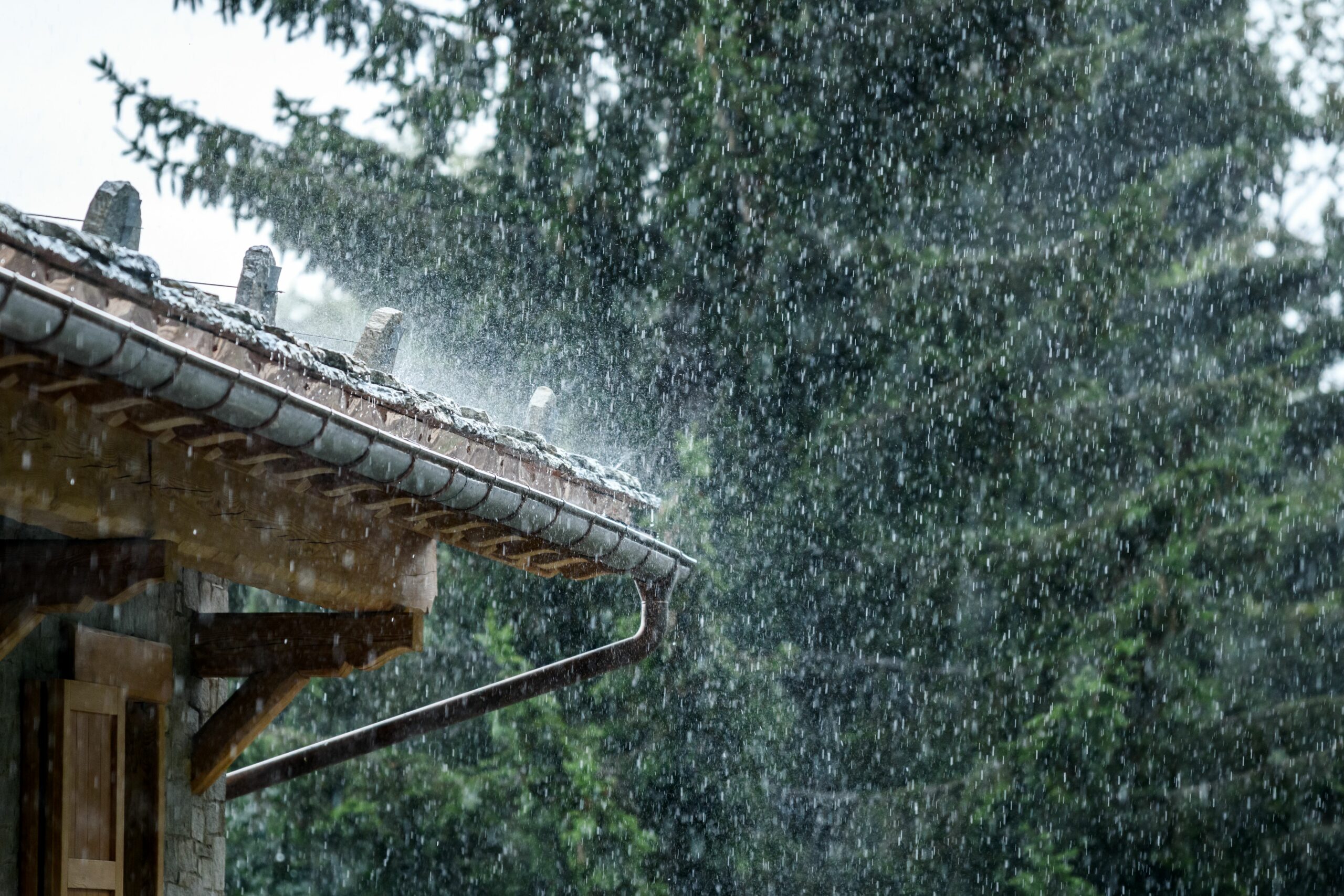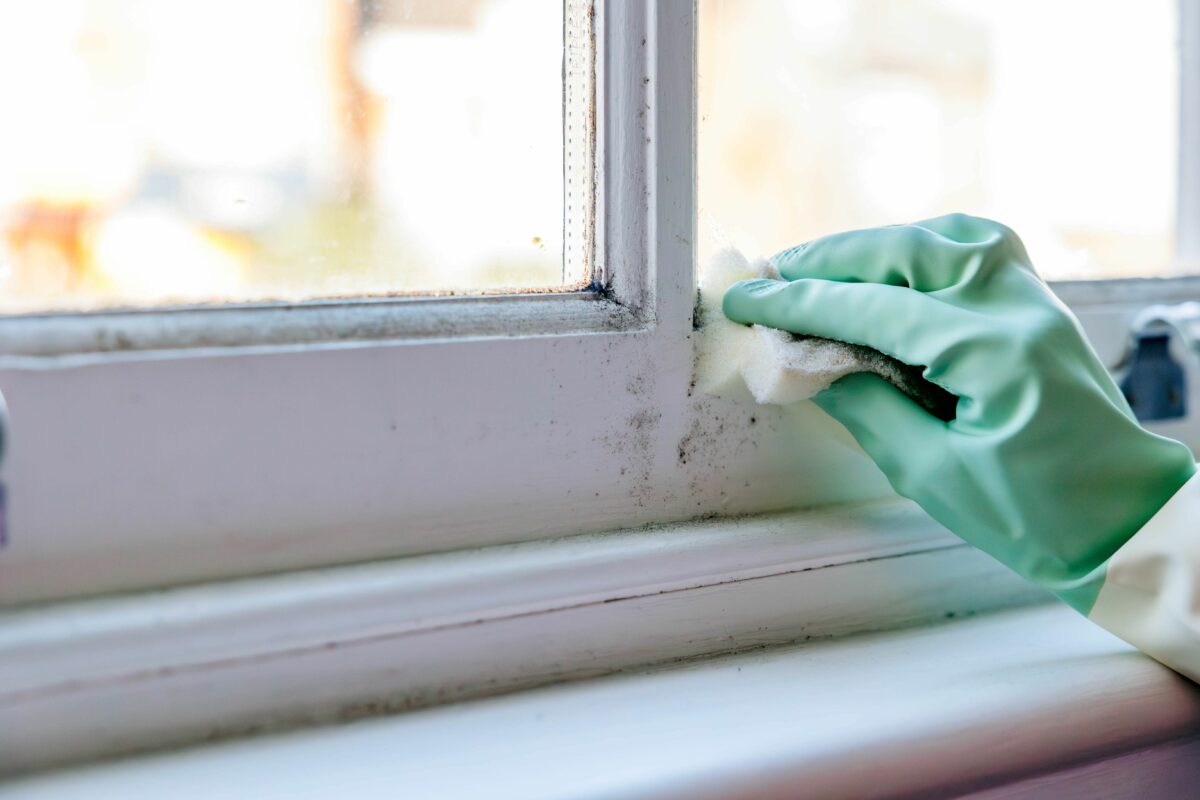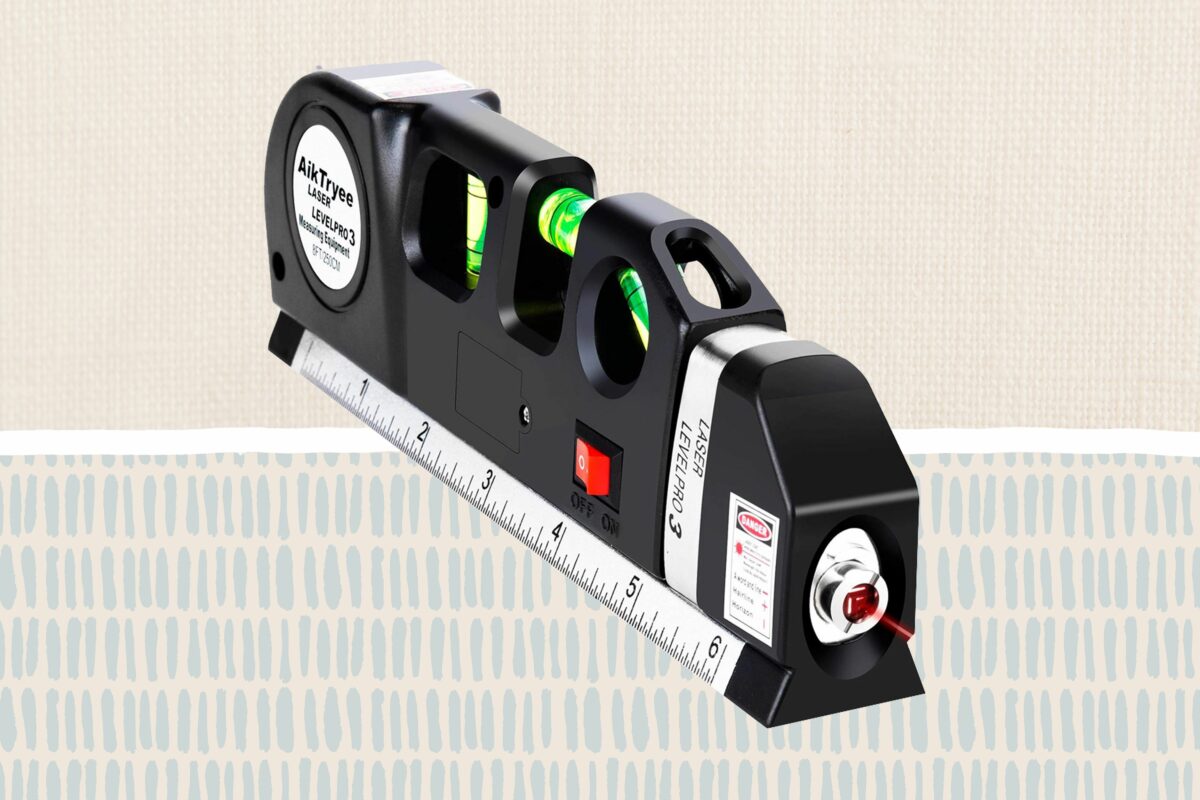Spring and summer promise days full of sun, but these warmer seasons can also include storms with strong winds and heavy rain. Without the proper precautions, torrential rain can leak through the roof, overflow the gutters, flood the yard, and even seep through a home’s foundation. Use this guide to prep your home and yard before excess rain and gusting winds strike.
1. Clean the Gutter System
The gutter system collects and redirects rain from the roof to appropriate drainage areas outside the home. If the gutters or downspouts are clogged, heavy rain can quickly gather and overflow under the eaves, into the roof cavity, and pour down onto the ground where the excess moisture may find its way through cracks in the foundation.
Before a big storm hits, be sure to inspect the gutters and downspouts. Clean out any sticks, leaves, or other debris that has been collected, then flush the gutter system with a garden hose to ensure it’s clear and there aren’t any leaks. Adjust the direction of the downspouts to avoid draining the water close to the house, where it could accumulate in the soil and seep through the foundation.
2. Inspect the Roof
Roof inspections should take place about once a year or after any major storm. The purpose of this inspection is to look for signs of damage, make repairs, and replace any broken or displaced tiles or shingles. It’s also a good idea to remove any dirt that has accumulated on the roof and inspect the flashing to verify that it is properly sealed. If these steps sound overwhelming to do on your own, hire a roofing professional to conduct the inspection, identify any issues, and make repairs.
3. Store or Secure Outdoor Furniture and Appliances
While some outdoor furniture might be made to withstand heavy rain, the strong gusts of wind that often accompany a powerful rainstorm may pose a bigger threat. Before a storm hits your home, store any moveable outdoor furniture and appliances in a shed or garage. Items that cannot be stored should be tied down and covered to prevent them from being blown away or damaged. Likewise, it’s crucial to clean up any fallen tree branches, sticks, or other objects that may otherwise be hurled by the wind and into your outdoor living items.
4. Close and Secure Windows and Doors
Even a light rain at the right angle can cause significant damage to the inside of the home if the windows or doors are left open. So before any rain falls, close the windows and doors around your home. Inspect the windows, doors, and frames for any leaks or gaps, and consider sealing them with caulk or installing weather stripping to prevent any water from coming inside during the storm.
Depending on the storm’s severity, you may also need to install temporary protection for fragile surfaces like windows or glass doors. Install hurricane shutters or mount plywood over these delicate areas to create a barrier against strong winds and rain. Hire a professional to install these protectant solutions if you are unsure how to do them yourself.
5. Test the Sump Pump
Sump pumps prevent a basement or crawlspace from flooding, but if the sump pump isn’t working correctly during heavy rain, you may have a lot of water damage by the time the storm lets up. Before a rainstorm, test the sump pump by pouring water into it. If the pump doesn’t turn on, you may need to have it repaired or replaced.
Also, the pump’s drain lines can become blocked with sand, dirt, and other debris, so if the pump turns on but cannot discharge the water, you need to have the drain lines unclogged before the next storm hits. To be extra cautious, check the pump for signs of wear and consider installing a battery backup to keep the pump functional even during a power outage.
Dean Schoeppner
6. Prune Trees and Remove Dead Limbs
Blowing and detached tree branches can shatter windows, tear siding, and rip tiles from the roof. Inspect your trees regularly to reduce the risk of damage to your home or nearby vehicles during a storm. Before heavy rain, take the time to prune your trees and remove any loose and dead limbs.
7. Protect the Garden
Heavy winds and powerful rain can destroy a home garden, but with a few precautions, even small plants can be kept safe. Cover plants with glass or plastic domes, known as cloches, to protect individual plants. After covering the plants, place a brick or a heavy stone on top to keep the cloches from blowing off.
Next, spread a tarp over groundcovers and low-growing plants. Drive stakes through the corners and edges of the tarp to keep it in place during the storm. Stakes can also support weaker plants that may otherwise break or be torn out of the ground by strong winds. If the garden sits lower than the rest of the yard, you may also need to build a barrier or dig a trench to redirect excess rain away from the garden.
8. Prepare a Home Emergency Plan and Kit
Weather doesn’t wait until everyone is home and secure. Make a plan ahead of time to know where you will go, how to contact your loved ones, and who you can get additional support from, if needed. Additionally, put together an emergency kit that includes flashlights, batteries, at least a gallon of water per person, an emergency supply of food, a can opener, and a first-aid kit. Store important documents, like your mortgage information, the deed to your house, birth certificates, or any other essential items in a sturdy, fire-resistant safe or lock box.














